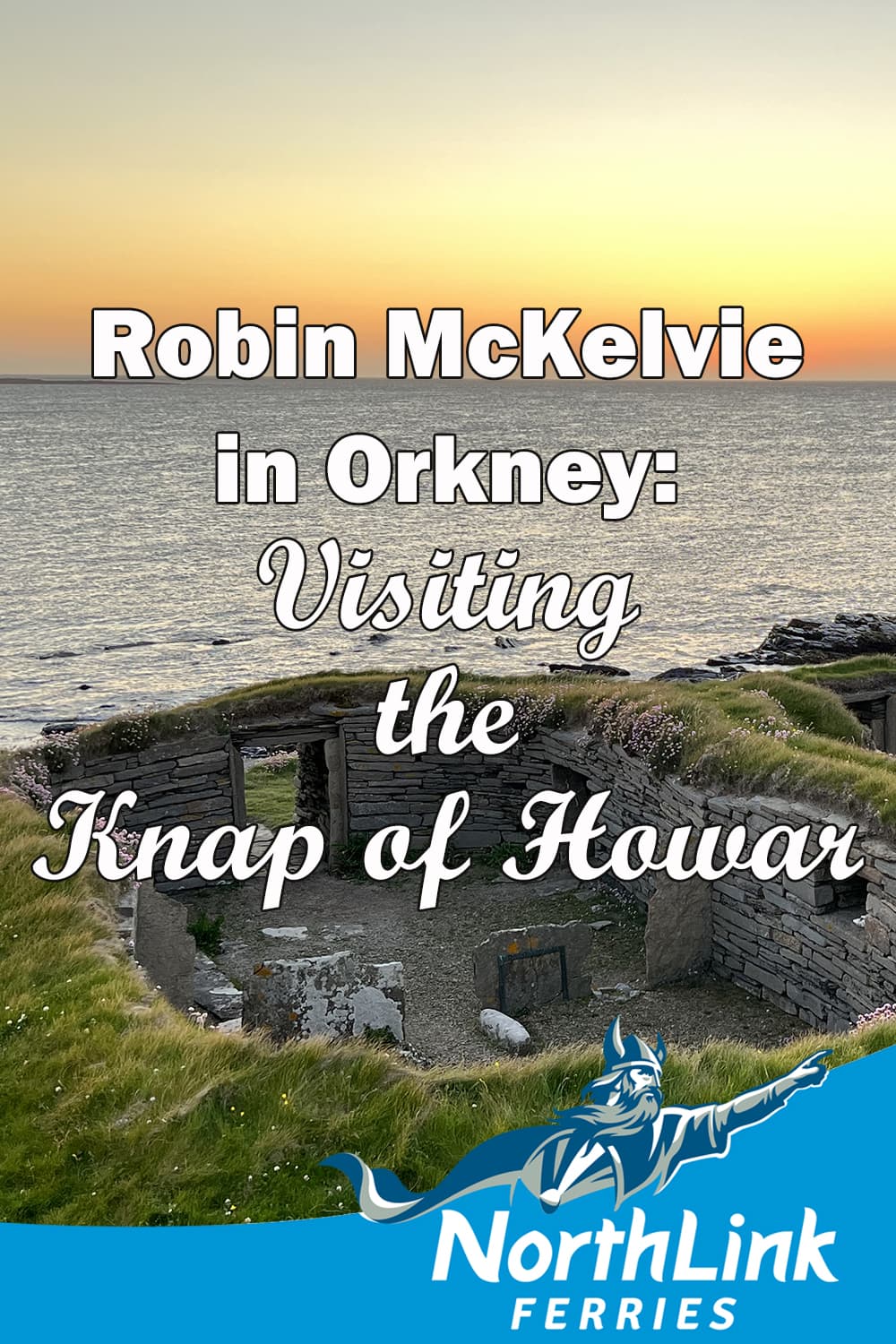Robin McKelvie in Orkney: Visiting the Knap of Howar
There is a Neolithic site in the Orkney Islands that blows me away. That is not strictly true – there are myriad Neolithic treasures sprinkled all over this densely rich archipelago that stop me in my tracks. Each is worth visiting in its own life-affirming right, but one burns within me as I write. I’m talking about the Knap of Howar, a remarkable site at least half a millennia older than Stonehenge, probably much older at almost 6,000 years old – I’d like to share its joys with you.
The Knap of Howar is among the oldest standing stone buildings in northwest Europe. The brace of houses constitute the best preserved and most easily visible early Neolithic settlement ever uncovered in northwestern Europe too.
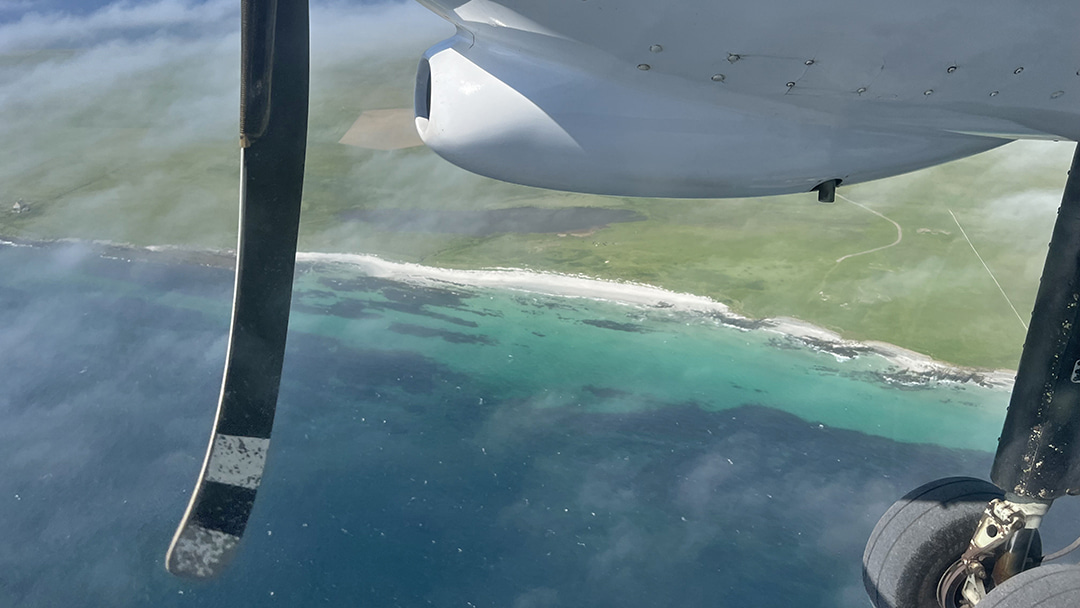
Everything is out of the ordinary about the Knap of Howar. Getting there is an integral part of the experience, whether you adventure over on the ferry, or hop over on the world’s shortest scheduled flight from Westray to Papa Westray. It normally takes just over a minute to scoot over on the wee plane, and it’s quite an introduction to this verdant isle – known locally simply as Papay – and the sparkle of its Caribbean-esque white beaches.
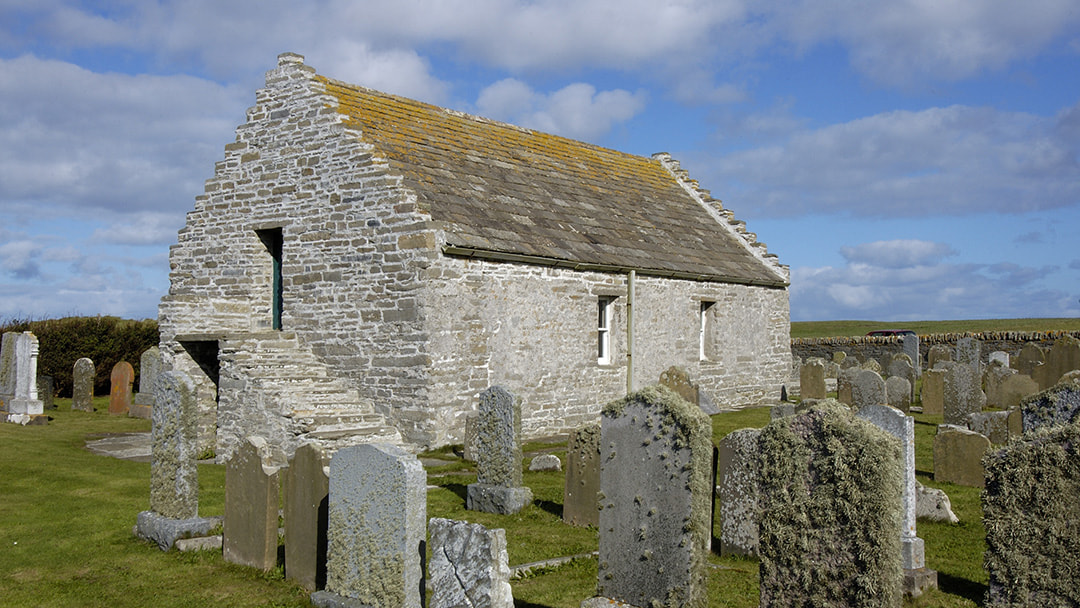
There are a surprising amount of things to see and do on Papa Westray, so I thoroughly recommend you don’t just try and ‘do’ the Knap of Howar as a day trip. Linger a while and throw yourself into the welcoming community. Check out one of the oldest churches in this part of the world, the folk museum, the epic birdlife, and those starched white beaches. You won’t tire of Papa Westray in a hurry, especially if you hook up with the Papay Ranger, a brilliant guide and pillar of the local community who really opens up the isle. He is great on the Knap of Howar too, a site that looks and feels different in every light, at every time of day. Sunset is my favourite time, when the ancient stones glow with the fiery light.
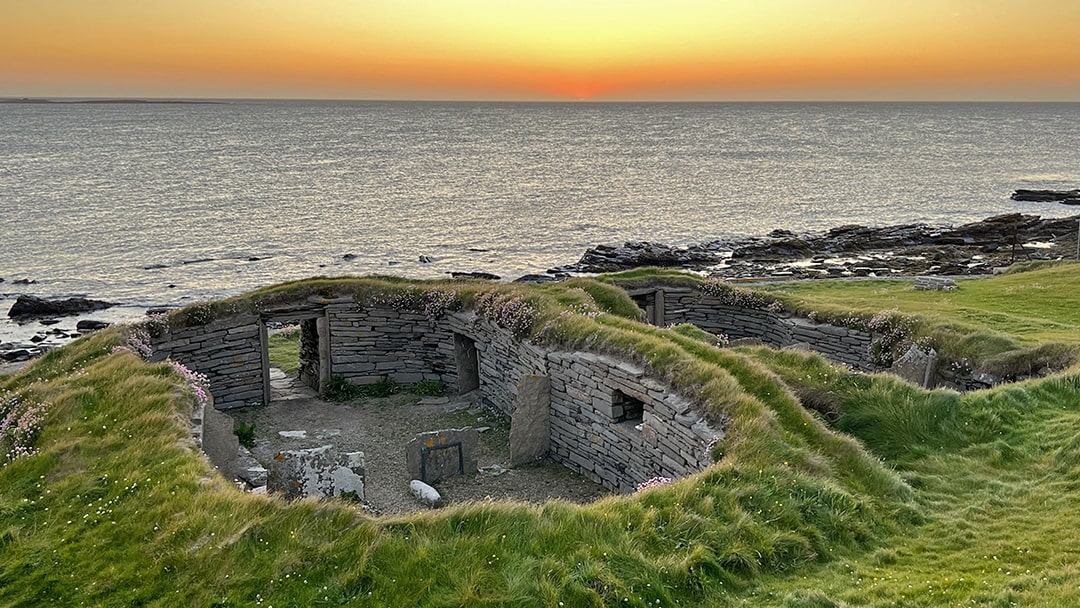
The first time I visited the Knap of Howar 20 years ago could scarcely have been more dramatic as I bashed ashore on a dingy launched from a research vessel on a birding cruise around Scotland. Arriving on what felt like a virgin shore, I was welcomed by a brace of seals and the squawk of oystercatchers. I wanted to savour the moment, breathe in the air by the water here as people have done for so many millennia.
I quickly realised how lucky we are to have this national treasure. The Knap of Howar was only brought back to us in the 1930s when the ocean’s ravages uncovered it. And then it took until excavations in the 1970s for the site’s importance to really come to the fore. It is now in the care of Historic Scotland.
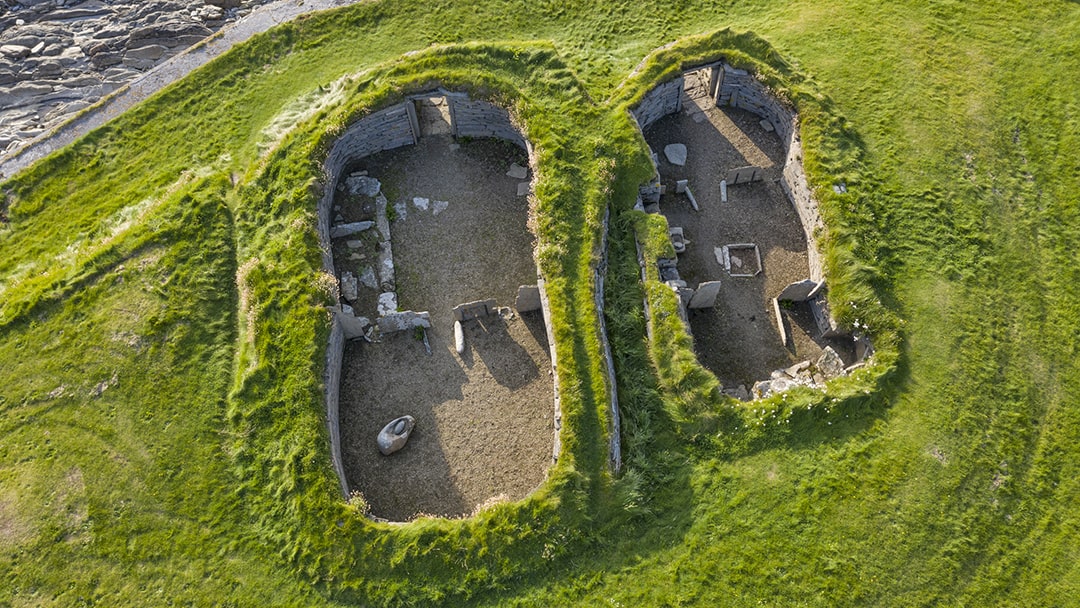
The Knap of Howar’s inhabitants would have had no idea, of course, that thousands of years later people would make a pilgrimage here to visit their stone dwellings, the oldest standing stone buildings in northwest Europe. The brace of houses constitute the best preserved and most easily visible early Neolithic settlement ever uncovered in northwestern Europe too. They are of global interest – there is no exaggerating their importance and the window they offer into the lives of our ancient ancestors. The quality of the build is nothing short of sublime – the man behind the Ness of Brodgar dig in Orkney’s mainland, Nick Card, once told me, “If you want something built well, ask a Neolithic builder” and you see that here.
Unlike some historic sites in the likes of Italy and Greece, the Knap of Howar is not hermetically sealed off. Elsewhere it can feel hard to literally touch the history, to connect with it at the main sites. At the Knap of Howar on my first visit I couldn’t believe I could just ramble right up the twin entrances and then delve deep back through the millennia. Forget cafes and snazzy visitor centres – you are just face to wonderful face with prehistory.
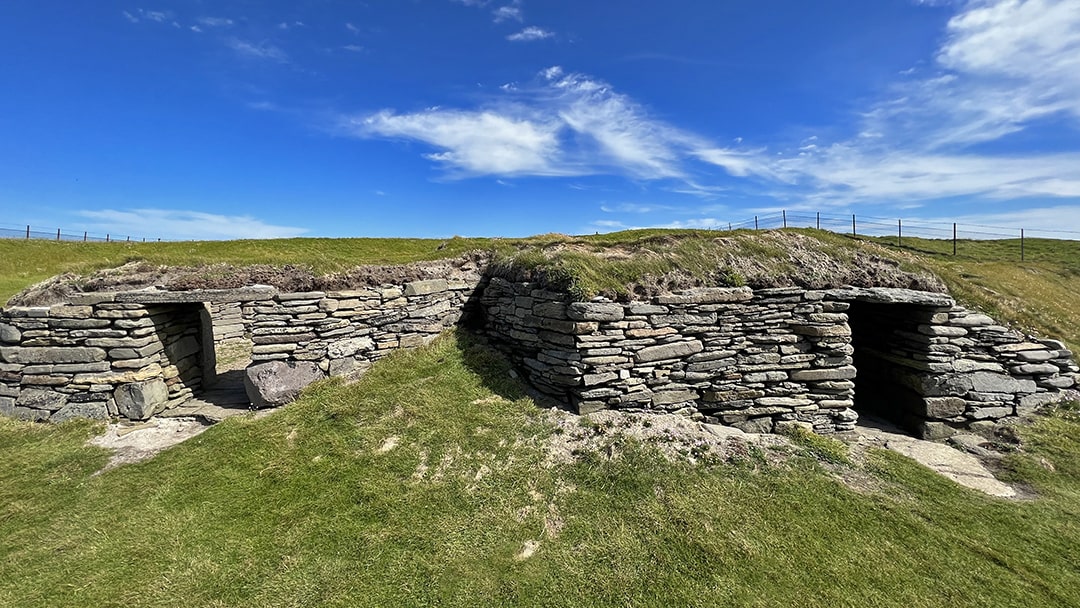
Dipping my head beneath the hulking mantle I eked my way in. The passageway is sturdy and well built, with thick walls to protect against the ravages of the Atlantic. The buildings are built smartly into the ground, half-submerged to further protect them. Coastal erosion remains a threat here today as it did then. The gaggle of stones on the shore that is thought to be the remnants of other storm-ravaged Neolithic buildings is arresting proof of that.
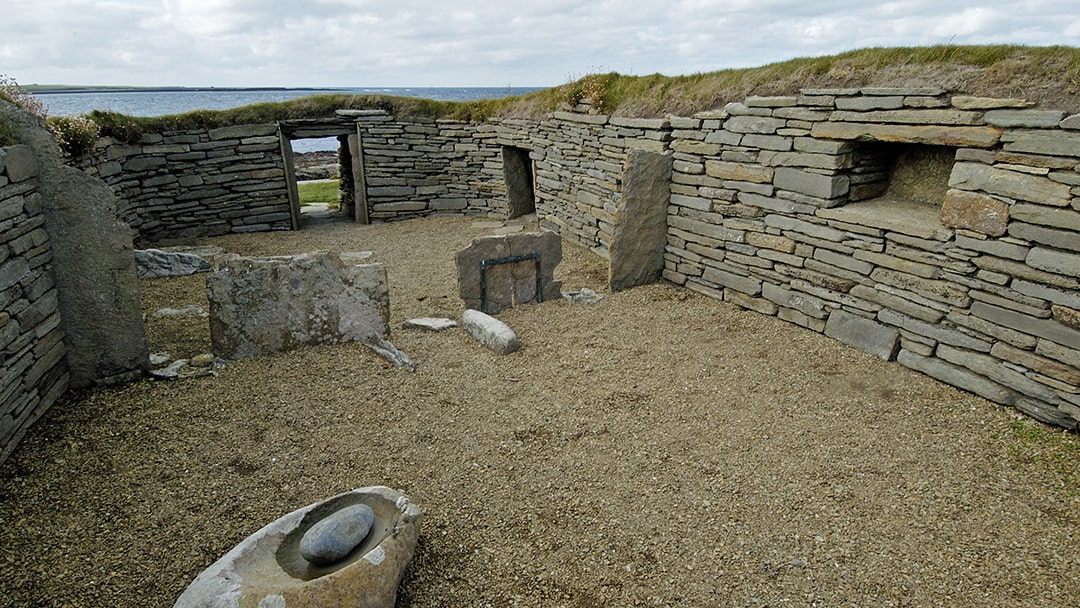
Entering the living quarters, I was immediately struck at how recognisable its features were. The rectangular sandstone room has a core of a life-giving hearth, chunky Flintstones-esque stone furniture, storage space in the walls and hulking Neolithic armchairs. I could imagine sitting with family and friends chatting away warmed by each other’s company and the hearth.
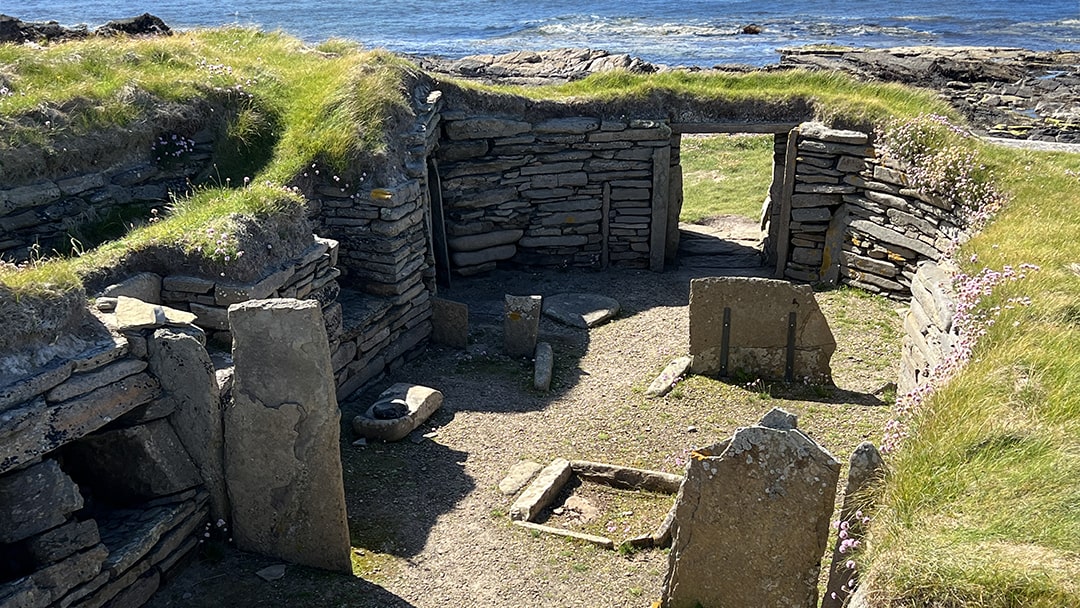
The adjoining building is thought to have been used more as a store and workshop. Together the brace of buildings vault us into a Neolithic time machine. The finds uncovered here paint a vivid picture of daily life. Shards of pottery have been found that reveal connections with the rest of the Orcadian archipelago, especially the Unstan style. Tantalisingly they also add weight to theories about how the various isles may have traded and interacted with each other. Were there cultural connections between the isles even then? The Knap of Howar gloriously throws up as many questions as it does answers.
Rudimentary tools have been found, so we learn what types of agriculture they invested in and how. There are better crafted stone axes too, showing the skills of the people who lived here. Also, from bones we know more about what animals they kept with evidence of pigs, cattle and sheep. The shellfish remnants and fish bones show seafood was as popular in Orkney as it is today, with fishing augmenting their farming.
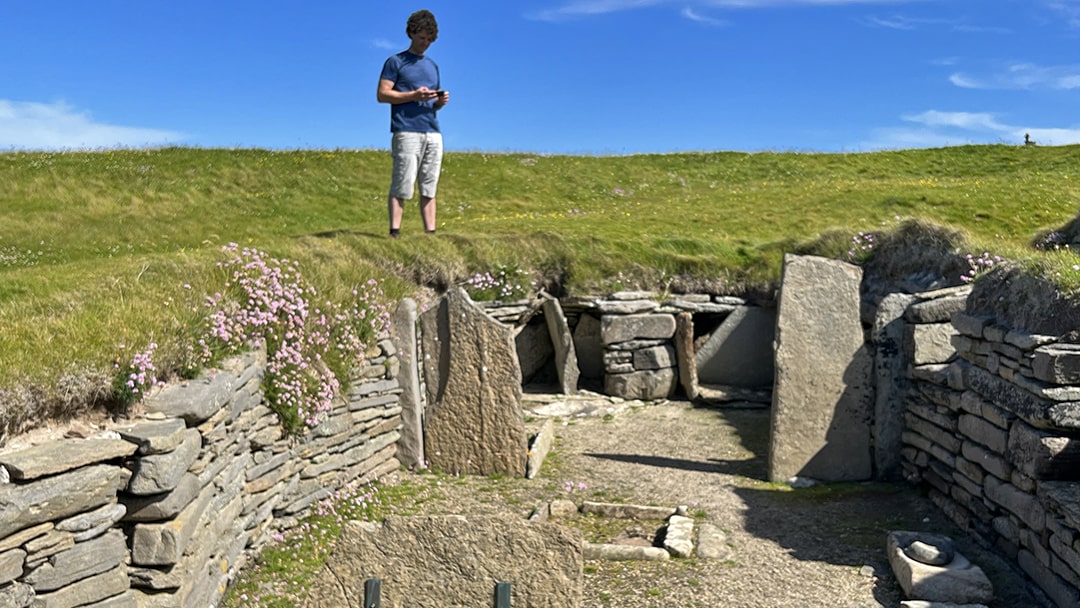
I’ve been lucky to return to the Knap of Howar a number of times over the years. Each time I learn more, notice something else and fall more for the site. The last time was on Johnsmas when the island’s tight-knit community welcomed me into their festivities. A highlight was an acoustic guitar singalong right down by the Knap of Howar.
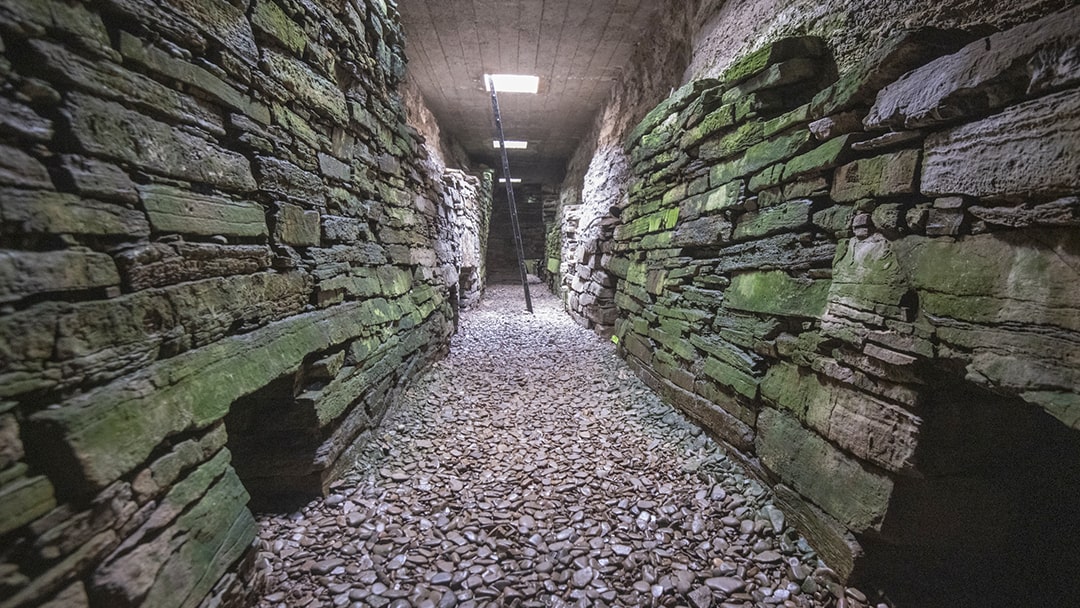
I’m going to leave you with another tantalising massive reason to come and visit the Knap of Howar. While you are on Papa Westray you can also catch a wee boat across to the Holm of Papa Westray, an isle with a Neolithic chambered cairn you can delve below ground to explore. One theory as that this mystical wee island was where the Knap of Howar’s residents were once buried. This adds yet another layer to the unique, spirit-soaring experience of visiting the otherworldly Knap of Howar.
What are you waiting for? Jump on a NorthLink Ferries ship and head back in time as you explore this globally important treasure.
How do you get to Papa Westray?
After reaching Orkney from the Scottish Mainland with NorthLink Ferries, to get to Papa Westray you’ll need to either fly from Kirkwall Airport or take another ferry from the Orkney Mainland.
The easiest route by ferry is to sail from Kirkwall to the island of Westray. It carries foot passengers and vehicles, and should be booked in advance, particularly during busy summer months. The ferry arrives in Rapness on the island of Westray. Then you must drive approximately 7 miles to Pierowall to catch a foot passenger ferry to Papa Westray. Alternatively, you can travel 10 miles to Westray airport and fly over to Papa Westray. Occasionally there is a direct ferry from Kirkwall to Papa Westray.
The ferries to Westray and Papa Westray are run by Orkney Ferries. Flights to Papa Westray are operated by Loganair.
 By Robin McKelvie
By Robin McKelvieRobin McKelvie is an award-winning travel writer and broadcaster who has been published in over 200 magazines and newspapers worldwide.
Pin it!